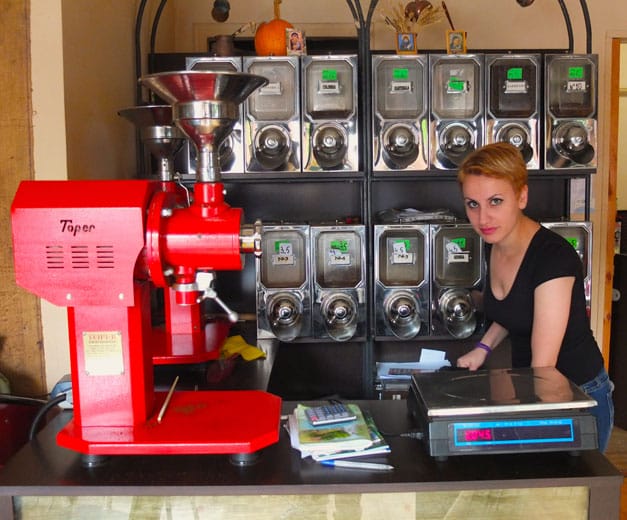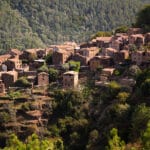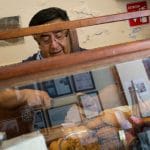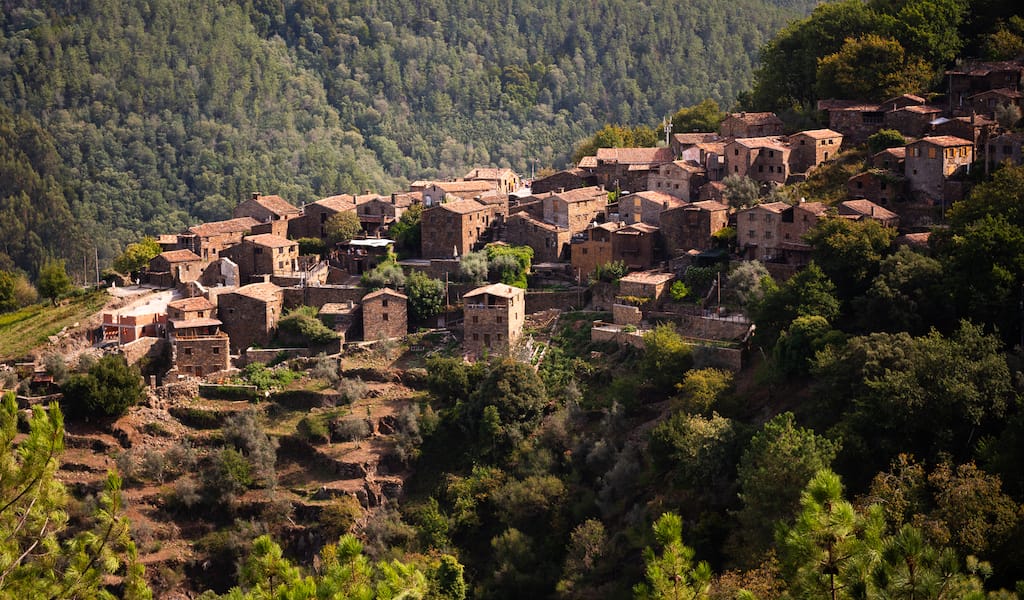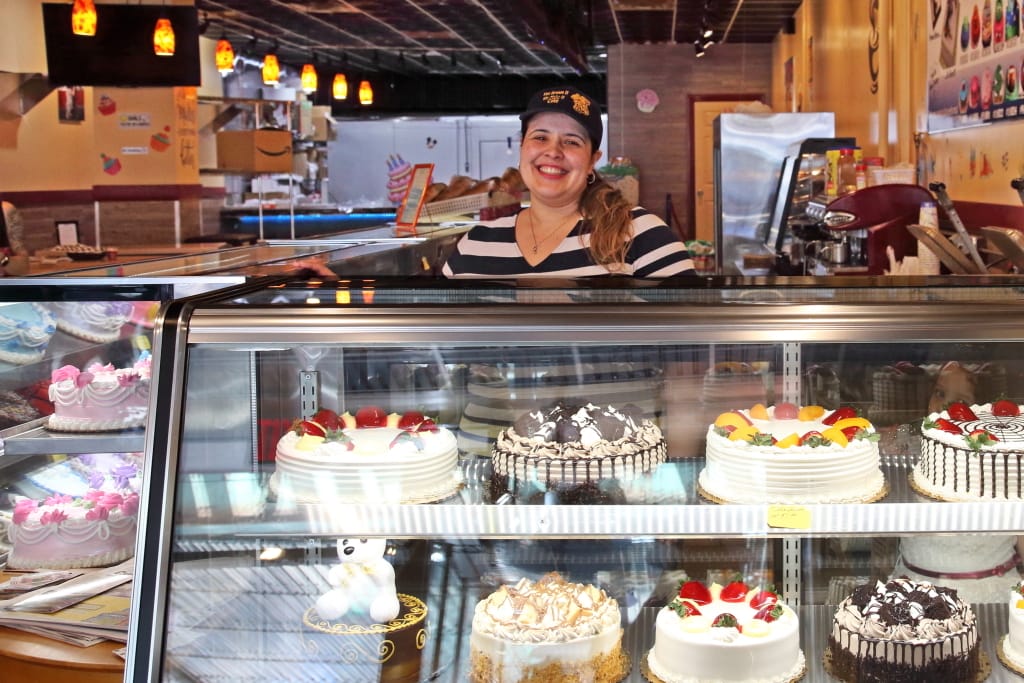With cafés popping up all over the country, from the arty boutique coffeehouses of Tbilisi to the Lavazza kiosks in villages like Zestafoni, it is easy to forget the humbler days of Georgia’s coffee culture, when an “Americano” was a chemically enhanced instant coffee powder in a stars-and-stripes-emblazoned packet added to a cup of hot water.
Before the proliferation of espresso machines, a real mug of joe meant a little porcelain cup of Turkuli – “Turkish” coffee – cooked cowboy-style by adding a heaping spoonful of ground coffee (and several spoons of sugar) to cold water and heating it in a plastic electric kettle or little copper pot on the stove. In Georgian homes, this is still the most widespread method for brewing coffee.
Like most local connoisseurs, we used to buy our coffee from our favorite bean dealer, which for us was an Armenian woman who rented a space in a nearby secondhand clothes shop and sold beans in plastic buckets labeled with such dubious monikers as Colombo, Nescafé and Pele. Knowing we liked our coffee potent but not too biting, she offered a blend of “Arabica” and “Mambo” beans, which suited us just fine.
Whenever we wanted to go the extra mile for good coffee, however, we would go to the main bazaar, next to Tbilisi’s central railway station, where another favorite dealer offered her special blend from a selection of over a dozen beans. For years, we were quite satisfied coffee junkies, meticulously brewing our Turkuli every morning, never imagining that life could get better. And then we met Ruben Avetisian, Georgia’s coffee guru.

It was late October 2010 when the 64-year-old Yerevan native cleaned out a little storefront on Perovskaya/Akhvlediani street and equipped it with a coffee-roasting machine. Soon the little strip of Irish-style pubs and Asian massage parlors was wafting in the seductive scent of roasting arabica and robusta beans, emanating from Le Cafe Du Monde. Our days of Mambo beans were part of the past.
“Oh, the beans from the bazaar are a catastrophe!” Avetisian shrieked, still drenched in sweat after a bout of roasting an hour earlier on this hot June afternoon. “Where are they roasted? I don’t know, but I think they are Indonesian beans. Cheap.”
Indonesian beans are an abomination to Avetisian. He says they smell like fish and are too wet. “There are only African beans and South American beans,” he said, switching to a heavily accented English, although he concedes that Indian Baba Budan and Nepalese beans are excellent too.
An Orientalist by profession who worked with the Armenian diaspora during Soviet times, Avetisian found himself without a job when the USSR disappeared, but he was “saved” by Valerie Gortsunian, a former associate whose family members were coffee magnates in France. She took him under her wing, teaching him the ins and outs of coffee until he decided to strike out on his own in Tbilisi, a venture that proved to be quite challenging at first.
“Georgians don’t know how to drink coffee!” he lamented. Yet his diligence and dedication to coffee are slowly paying off. He says more clients are realizing the difference between his personally hand-roasted organic beans and the mass-produced Lavazza, which most local restaurants and cafés buy. “I don’t roast quickly, like most Europeans,” he says. “I go slowly because I love the taste of the bean, not of the roast.”
Avetisian does not like selling decaffeinated coffee and prefers to offer his Number 10 blend, which he says is “light and delicate” and better to drink than chemically processed beans. For drinkers who want a kick, he recommends his espresso mix of 20 percent robusta and 80 percent arabica, or straight Ethiopia beans. But for flavor, he offers his own blends, like “Pirosmani,” named after Tbilisi’s favorite painter, for strong coffee lovers, and “Parajanov,” named after the famed Tbilisi Armenian director and artist. His personal favorite is Number 5, which he insists is a perfect balance of strength and flavor.
Recently, Avetisian slightly burned five kilos of beans, which he could have sold, but he threw it away instead. “Roasting is an art. You have to have pride in this,” he said. “It’s better to lose five kilos of burnt beans than to lose your clients.”
Editor’s note: We are sorry to report that Le Café du Monde is closed.
Published on June 12, 2015
Related stories
November 23, 2023
Porto“It’s not enough,” says the waiter at O Pascoal. We had inquired if one dish would be sufficient for three people, and his reply is immediate, firm and confident. We take his advice, order another, and the two dishes are easily enough for six people (we are three). We are in Fajão, an aldeia do…
June 17, 2019
QueensEditor’s note: We regret to report that La Gran Via Bakery has closed its Queens location. The original outpost of this Cuban bakery in Brooklyn remains open. Saturday, late afternoon, Jackson Heights. In the shadows of the 7, the elevated train that runs along Roosevelt Ave., sunlight is already giving way to street light; music…
April 11, 2014
Mexico CityTaquerías are probably the most common kind of eatery in Mexico City, but torterías, purveyors of tortas, the generously filled sandwiches that come on bolillo rolls or the smaller teleras, are not far behind. From stalls at subway station exits to restaurants that have been in business close to a century, torterías are a fixture…







































